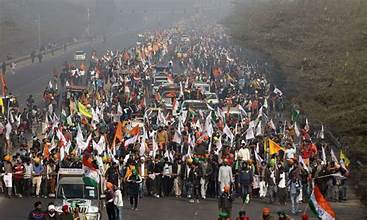The ongoing farmers’ protest in India has sparked widespread attention and debate, drawing both national and international interest. As tensions continue to simmer and negotiations stall, it’s crucial to delve deeper into the intricacies of this movement and its implications for the agricultural sector. In this article, we’ll explore the latest updates, delve into the core issues, and analyze the broader significance of the protests.
Understanding the Farmers’ Protest Dynamics
Unraveling the Core Issues
The farmers’ protest revolves around the contentious farm laws enacted by the Indian government. These laws, passed in September 2020, aim to deregulate the agricultural sector by allowing farmers to sell their produce outside government-regulated markets, among other provisions. However, farmers argue that these laws favor large corporations and threaten their livelihoods by dismantling the existing system of guaranteed prices for certain crops.
Key Players and Stakeholders
At the heart of the protest are the farmers themselves, primarily from the states of Punjab, Haryana, and Uttar Pradesh, who rely heavily on agriculture for their sustenance. These farmers, organized under various unions and associations, have been leading the charge against the farm laws, demanding their repeal and a legal guarantee of minimum support prices (MSP) for crops.
Recent Developments and Live Updates
Delhi Traffic Advisory Amidst Protests
With thousands of farmers converging on the borders of Delhi, the city’s traffic has been significantly affected. The Delhi Traffic Police have issued advisories to commuters, urging them to plan their routes in advance and avoid areas where protests are concentrated. This proactive measure aims to minimize disruptions and ensure the safety of commuters amidst the ongoing demonstrations.
Security Deployments and Border Sealings
In response to the farmers’ protest, the Indian government has deployed extensive security personnel to the borders of Delhi, aiming to prevent any escalation of tensions and maintain law and order. Additionally, border sealings have been enforced to regulate the movement of protesters and mitigate the risk of unauthorized entry into the capital.
National and International Attention
The farmers’ protest has garnered attention not only within India but also on the global stage. International media outlets have been covering the developments closely, highlighting the scale and significance of the movement. Furthermore, several prominent personalities and organizations have expressed solidarity with the protesting farmers, amplifying their demands and concerns on an international platform.
Analyzing the Impact on Agriculture and Policy
Shaping the Future of Indian Agriculture
Beyond the immediate demands for the repeal of farm laws, the protests have reignited discussions about the future of agriculture in India. The push for agrarian reforms, coupled with calls for greater governmental support and investment in rural infrastructure, reflects a broader quest for sustainable and equitable growth in the agricultural sector.
Political Ramifications and Policy Reforms
The farmers’ protest has also underscored the complexities of governance and policymaking in India. The government’s handling of the protests, including its initial reluctance to engage with farmers’ representatives and the subsequent offer of amendments to the farm laws, has sparked intense debate and scrutiny. Moving forward, the protests are likely to influence electoral dynamics and shape the contours of agricultural policy in the country.
Disclaimer : इस न्यूज़ पोर्टल को बेहतर बनाने में सहायता करें और किसी खबर या अंश मे कोई गलती हो या सूचना / तथ्य में कोई कमी हो अथवा कोई कॉपीराइट आपत्ति हो तो वह [email protected] पर सूचित करें। साथ ही साथ पूरी जानकारी तथ्य के साथ दें। जिससे आलेख को सही किया जा सके या हटाया जा सके ।














